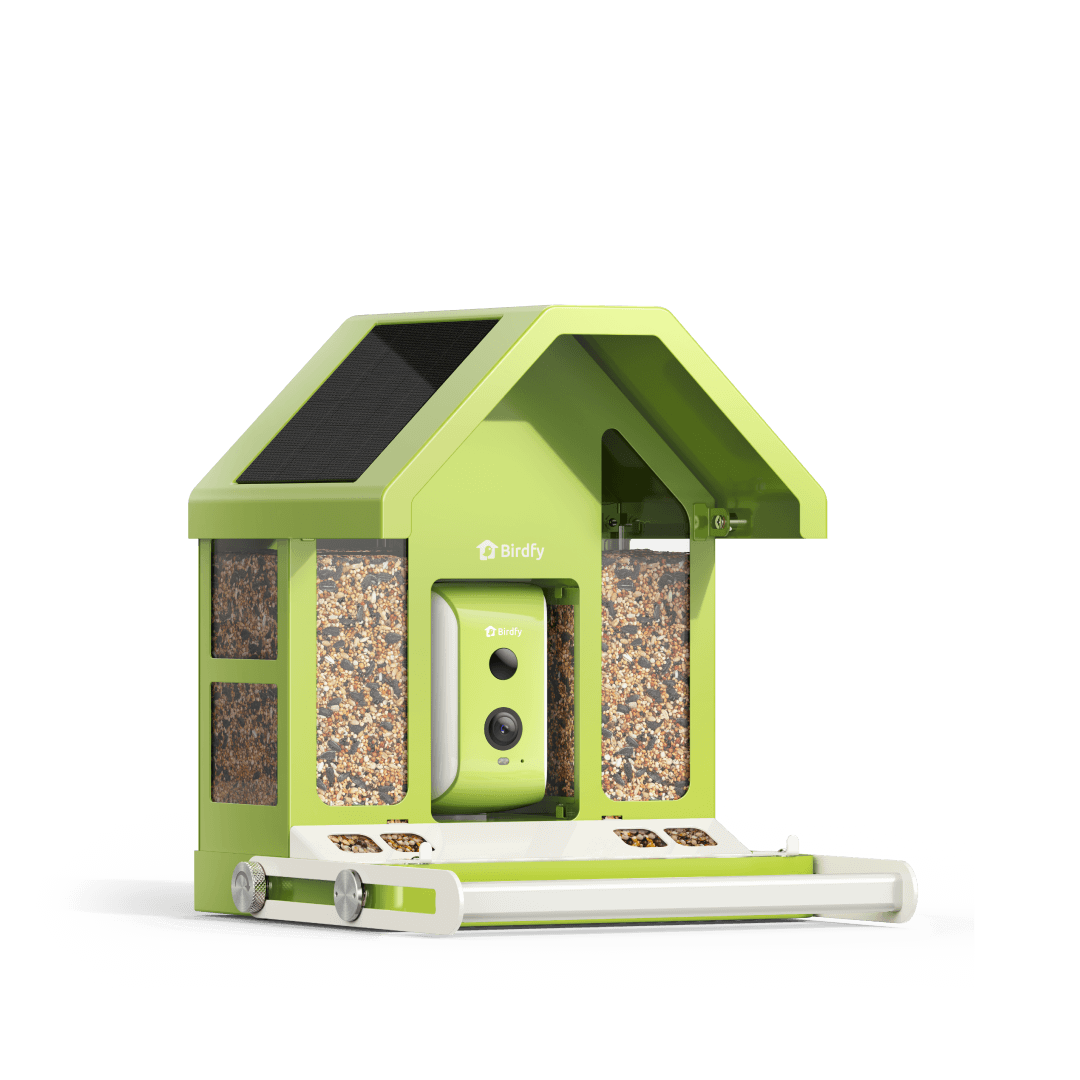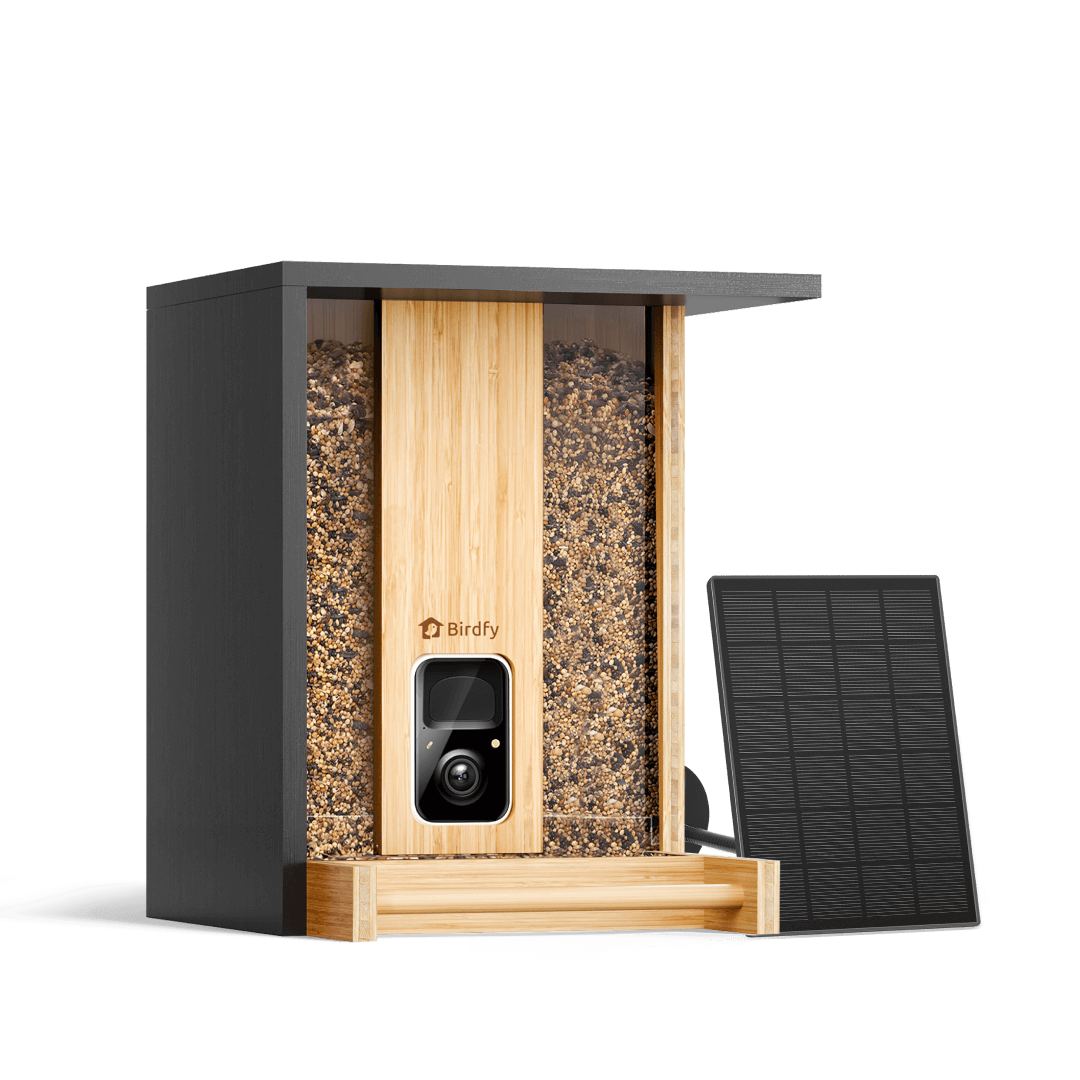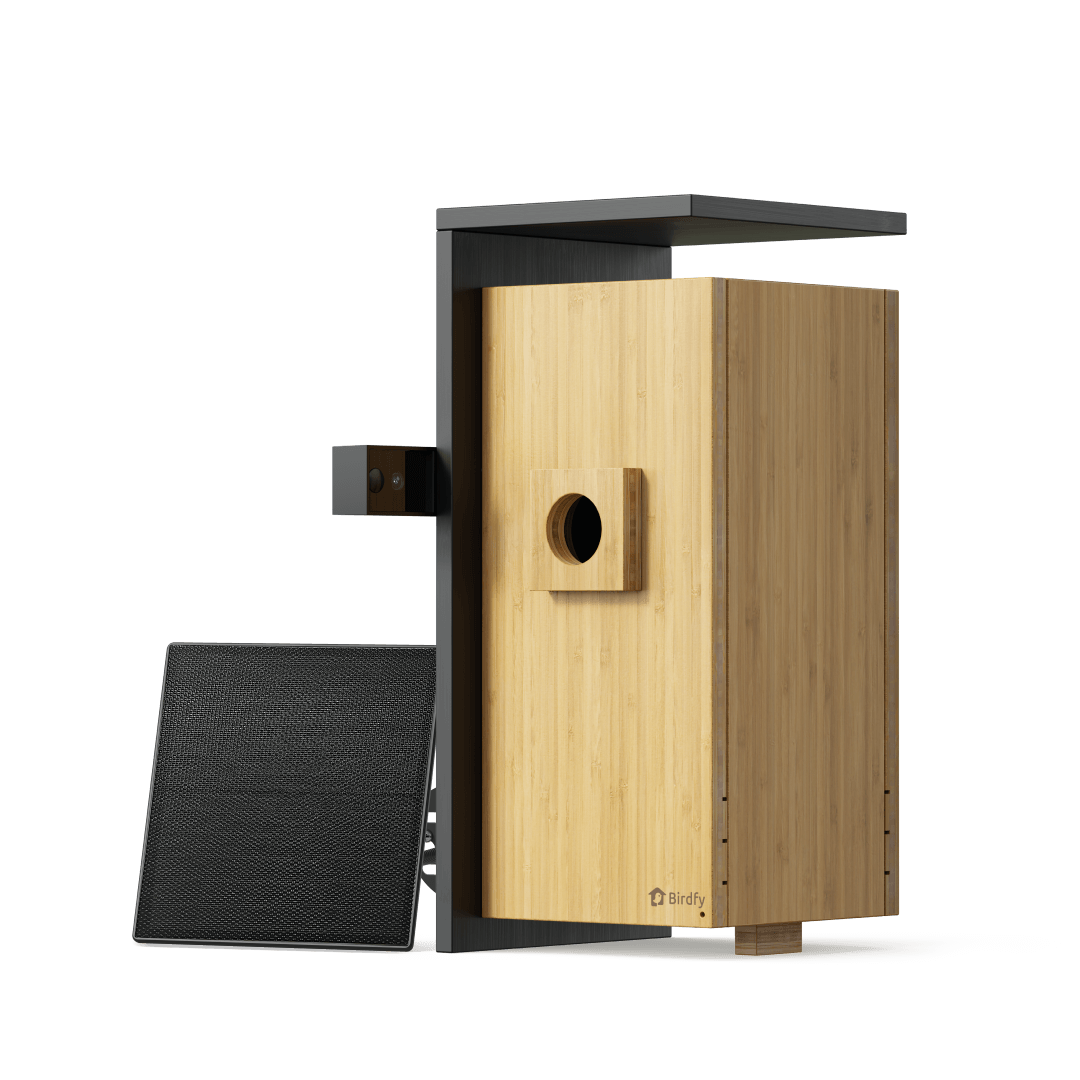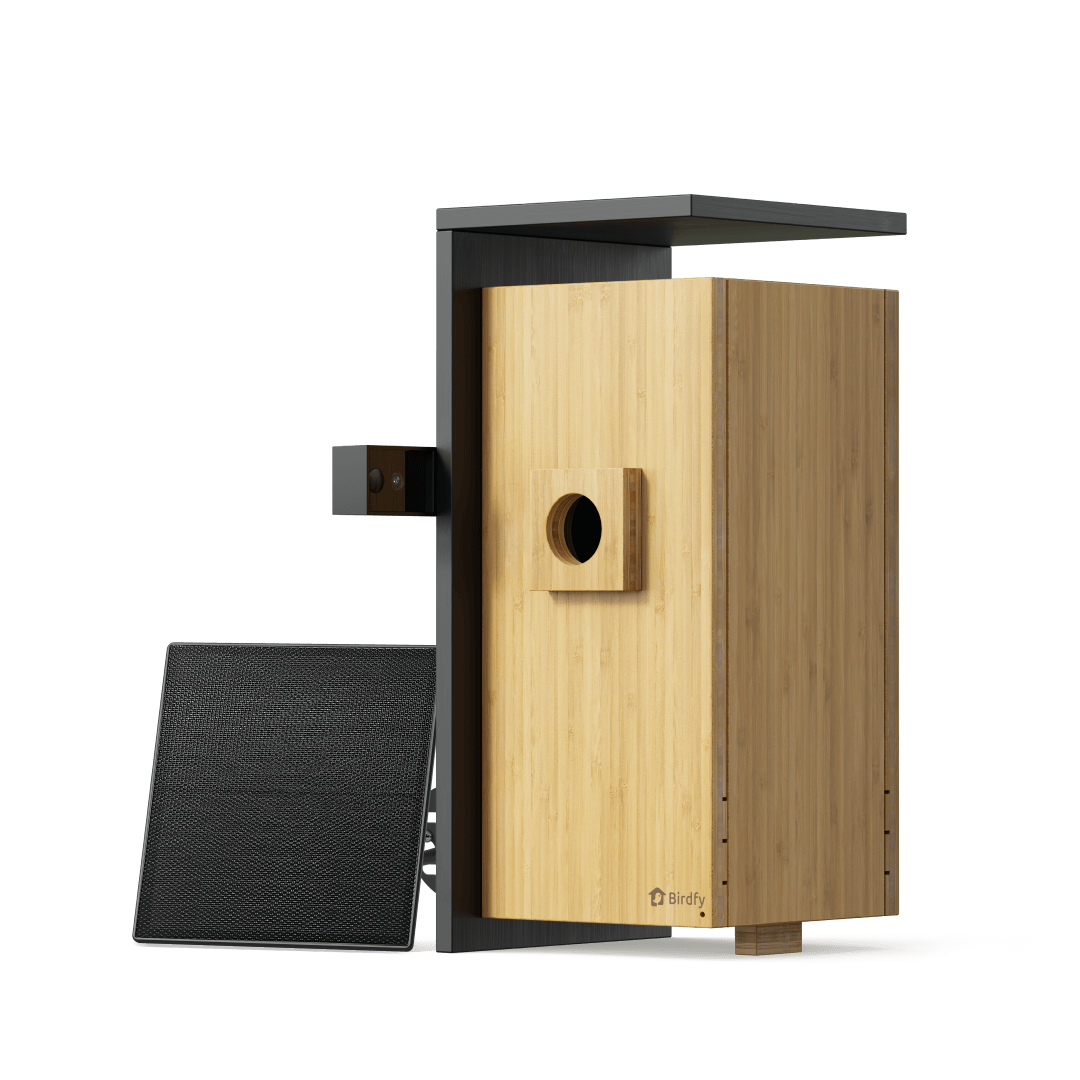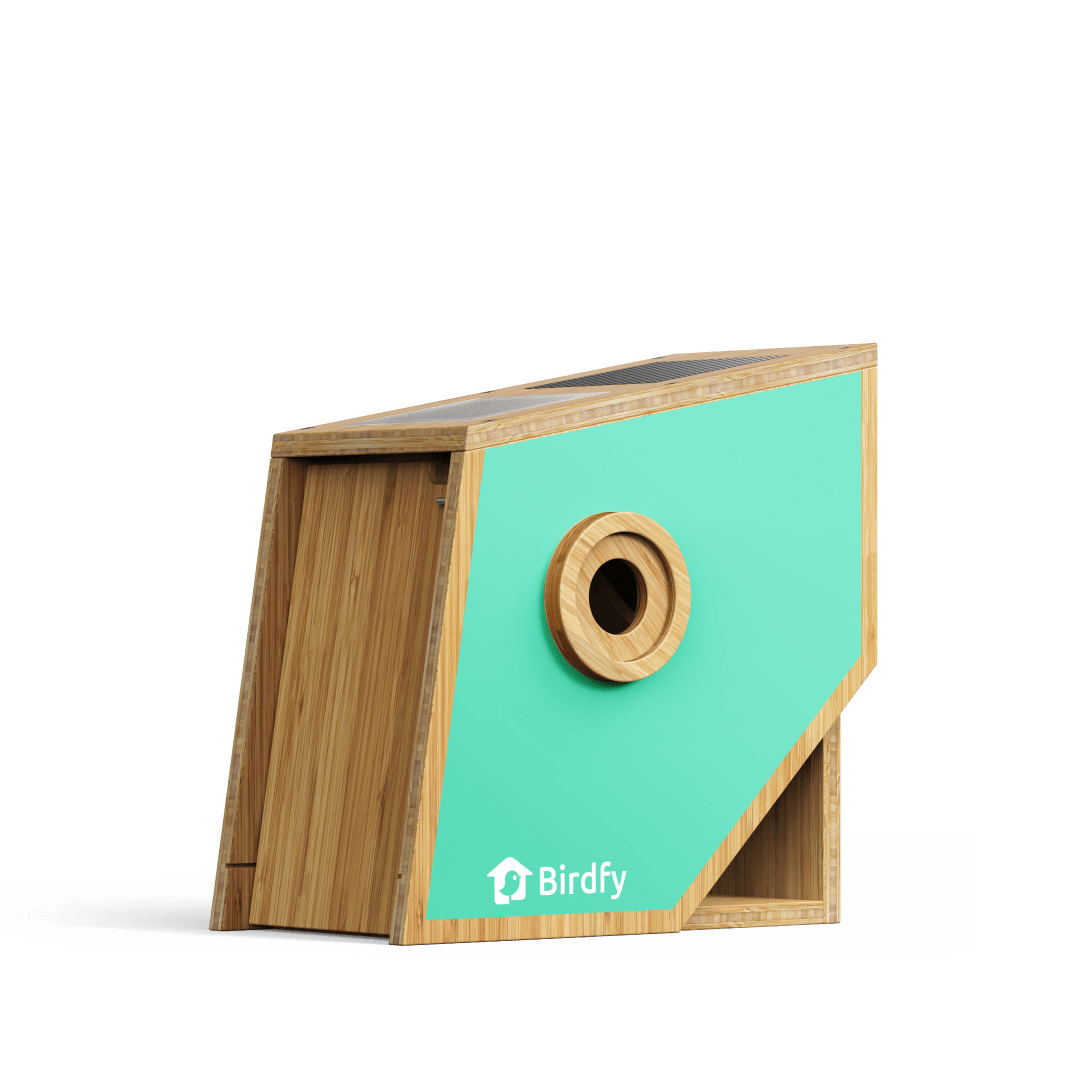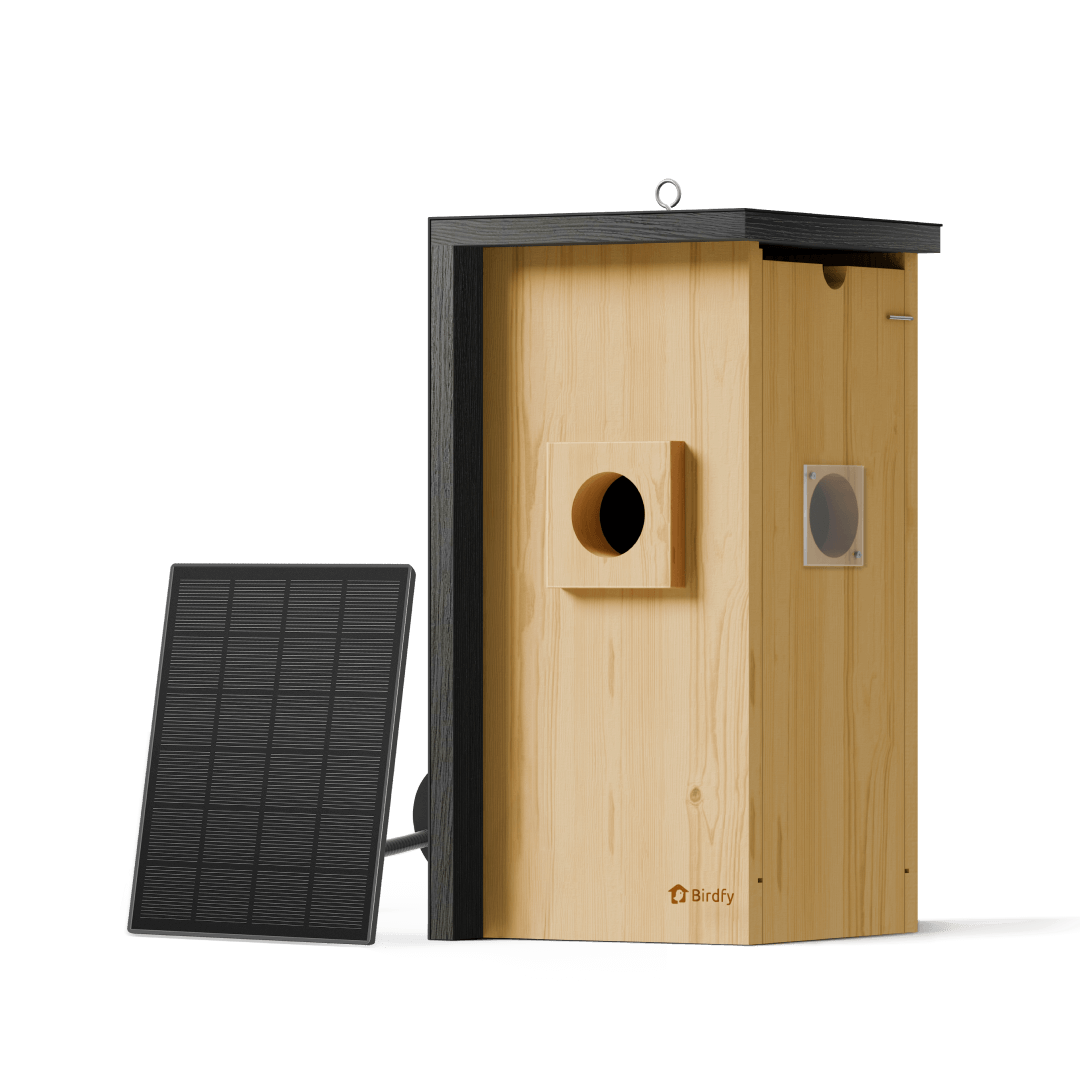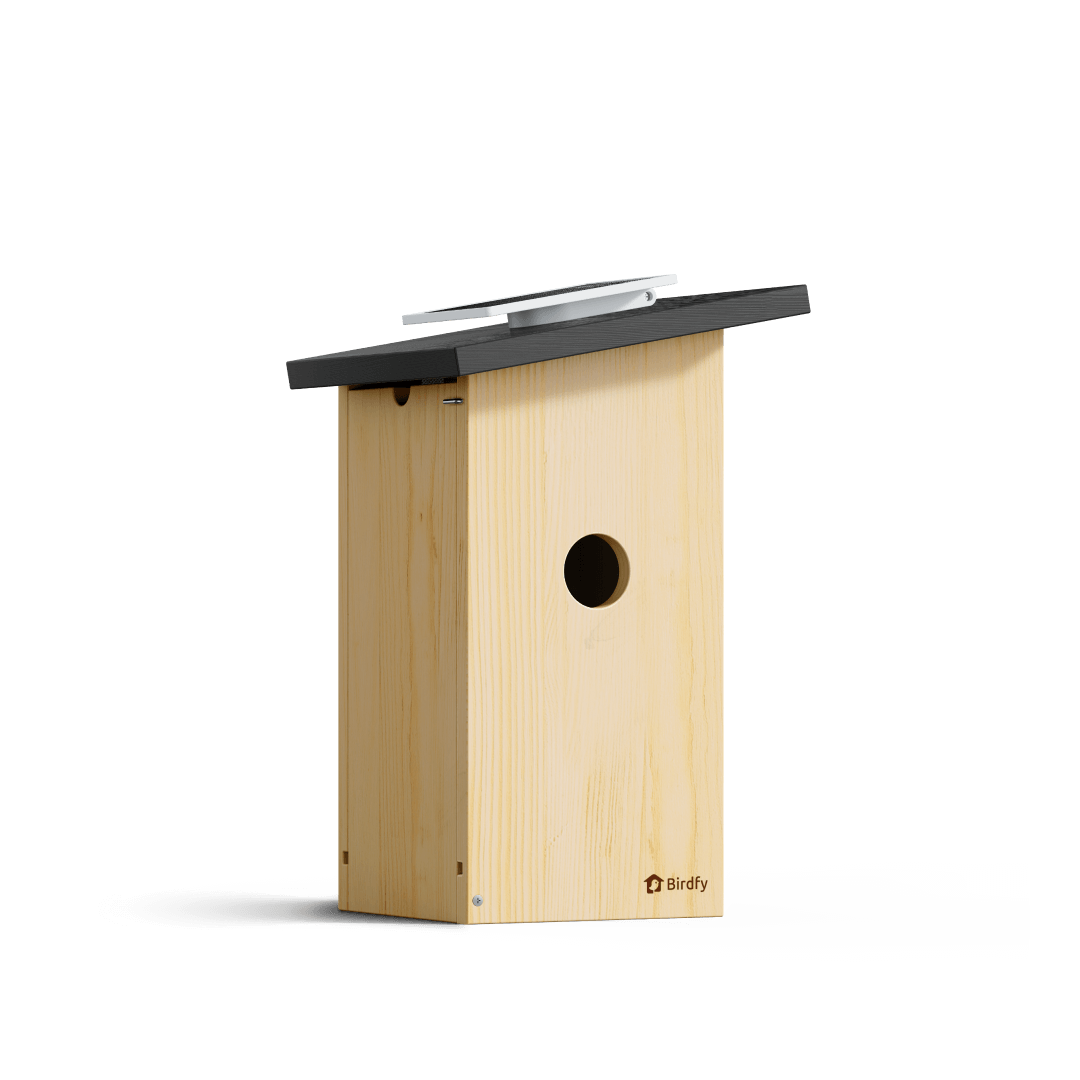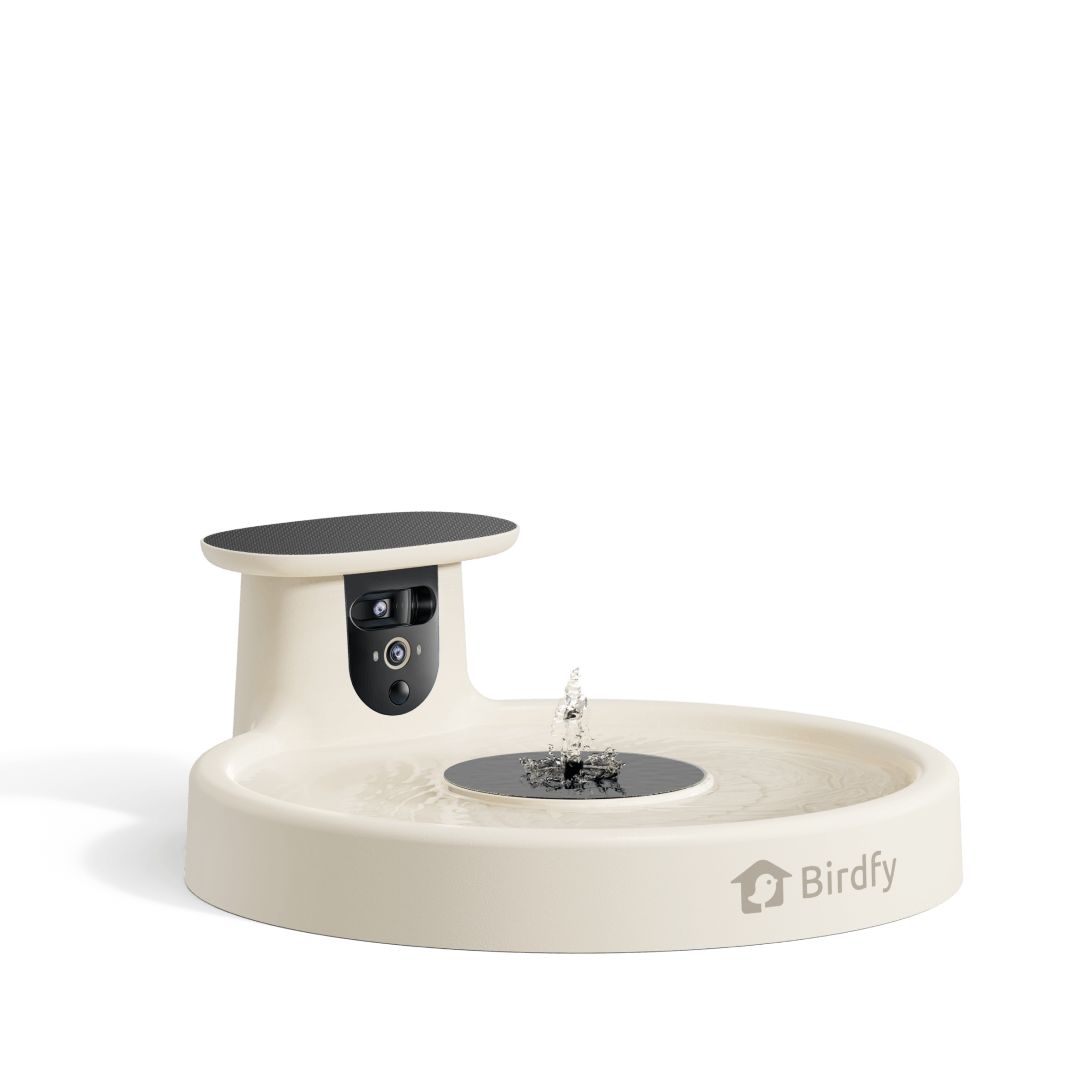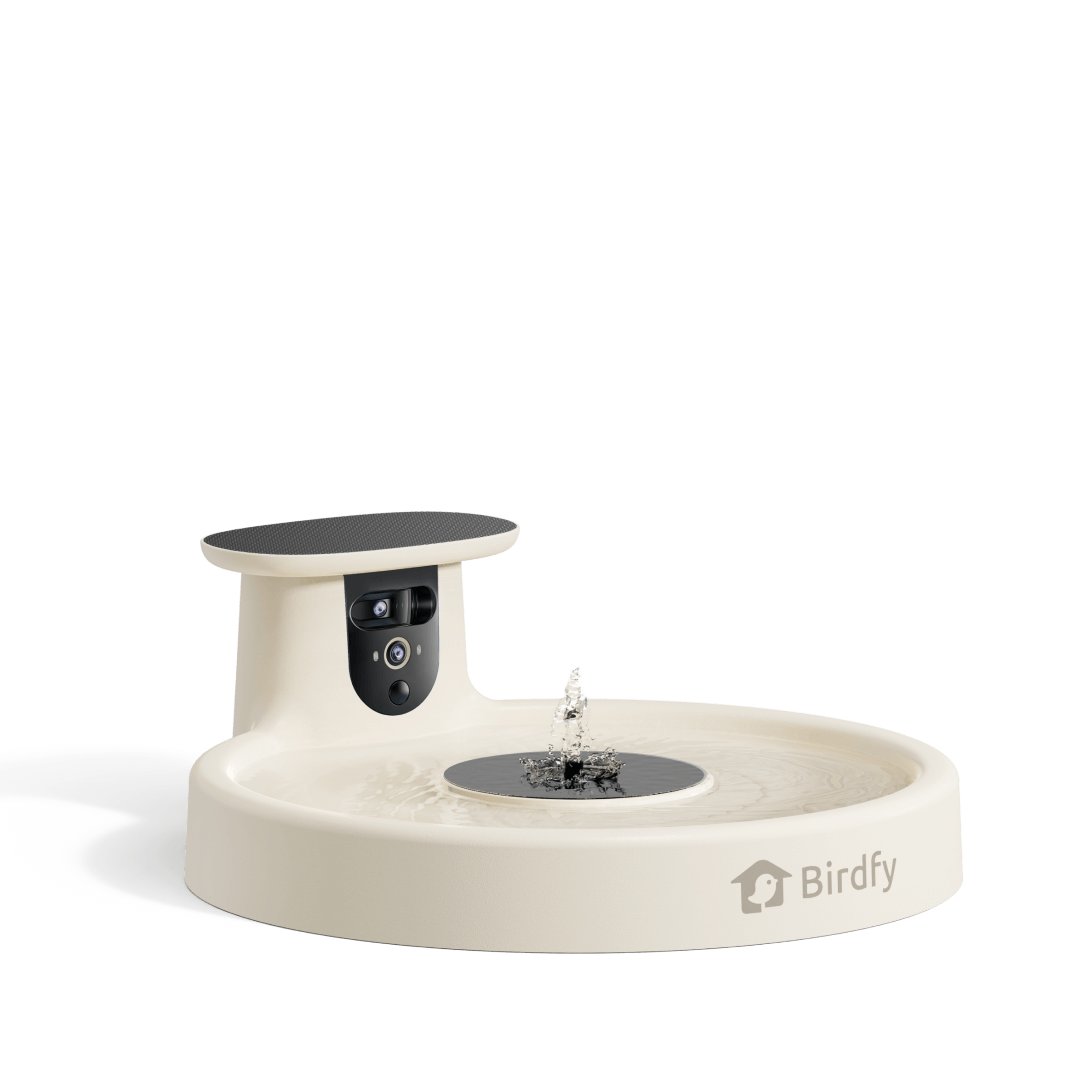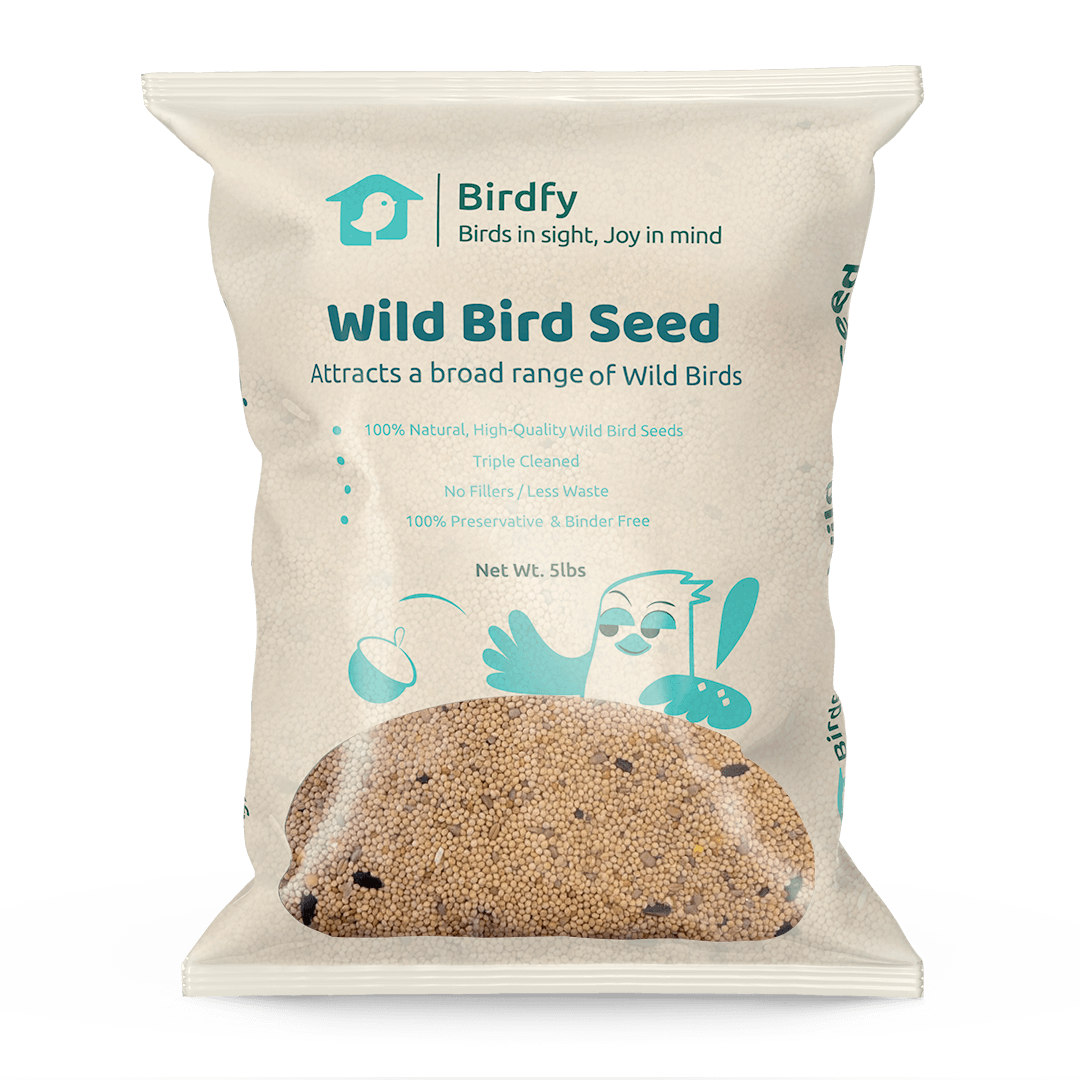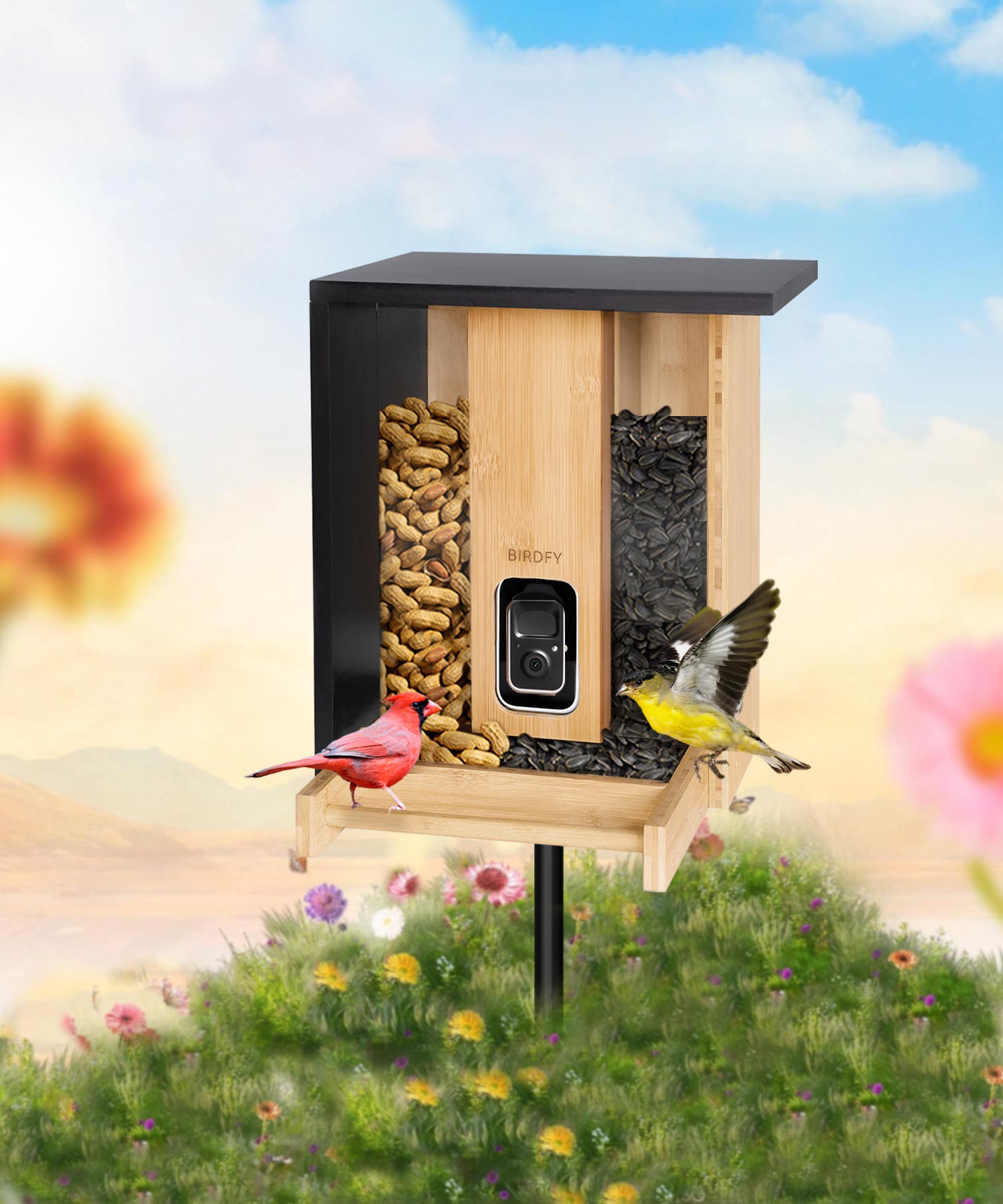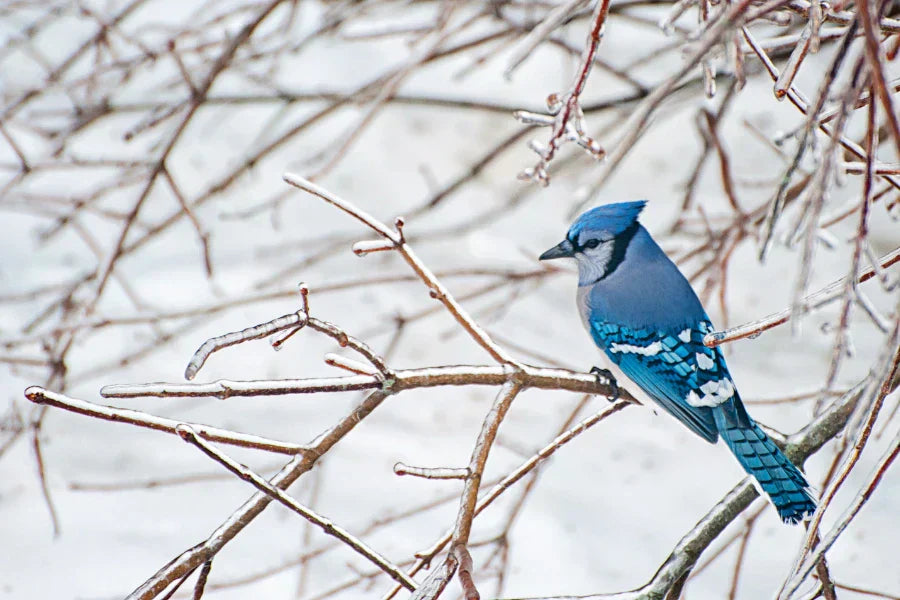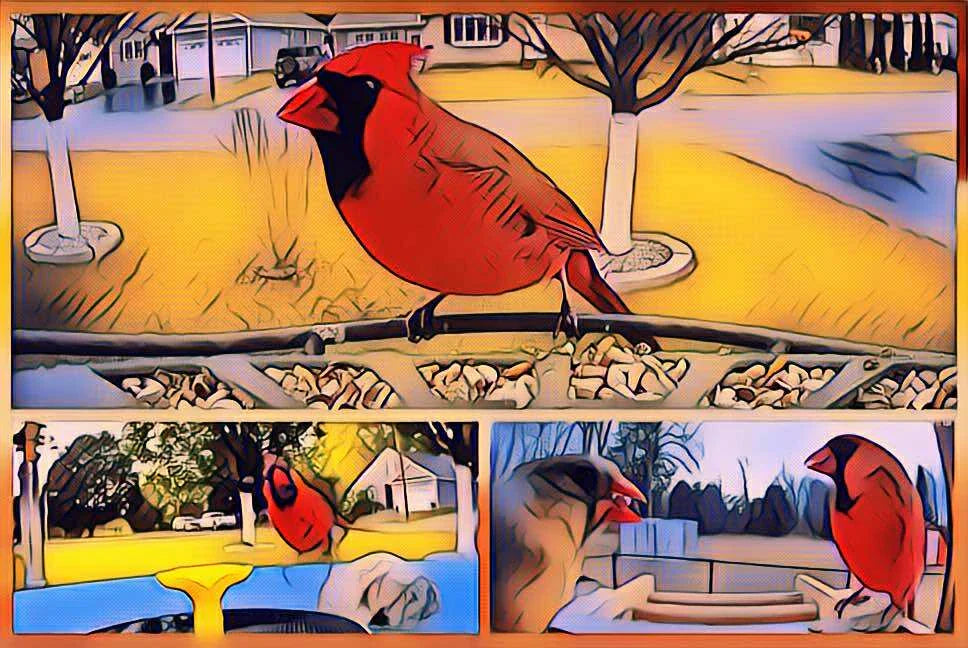10 Most Beautiful Birds in the World
Discover Birdfy's Top 10 beautiful birds, exploring their vibrant colors and vital roles in nature.
The world of birds is a colorful and vibrant realm. We can see the elegant seagulls soaring over the deep blue sea and the brightly colored forest birds hopping in the treetops of the deep dense forests, each bird has its unique charm. They either sing joyfully in the morning sun or perch quietly at sunset, telling stories of their own. Whenever we look up at the sky and see that free-flying figure, we feel an unspeakable beauty and freedom. The world of birds is a marvelous gift given to us by nature, reminding us to cherish and protect this beauty. In this blog, we'll explore the unique beauty and intriguing lifestyles of Birdfy's Top 10 Picks for the most beautiful birds in the world.
1.The Rainbow Lorikeet: Nature's Color Palette

The colorful Rainbow Lorikeet is a magnificent sight among birds. Its feathers boast a stunning array of colors, starting with a rich blue on the head and belly, which contrasts sharply with the bright orange and yellow breast. The back, wings, and tail feathers show a lush green that complements its natural rainforest habitat.
When the Rainbow Lorikeet is flying, it's amazing to watch. Its flight is fast and straightforward, with its colorful wings blending into a bright streak against the sky. When sitting, these birds are playful and friendly, often spending time together in noisy flocks which makes them more appealing. They are delightful to observe because they are agile when they hop and fly from branch to branch.
The Rainbow Lorikeet does more than just look beautiful. In their search for food, they serve a crucial role in their ecosystems. They move from tree to tree, transferring pollen and aiding in plant reproduction. This guarantees the survival of multiple plant species and supports other wildlife that depends on these plants for sustenance and shelter.
2.Paradise Tanager: The Jewel of the Rainforest

The Paradise Tanager is a stunning bird with beautiful colours that is a true gem in the avian world. It comes from the rainforests of South America and showcases the beauty of nature. This bird has a one-of-a-kind colour scheme that will leave you mesmerised.
Living high in the treetops, Paradise Tanagers have an important role in their surroundings.They eat fruits and insects, helping control insect populations and scatter seeds throughout the forest. This scattering of seeds is vital for renewing the rainforest, a place that supports a diverse range of plant and animal life. The rainforest is also crucial for the health of our planet.
Its body has a rich turquoise blue covering the head, neck, and back, which gives it a luminous quality. This blue merges smoothly into a deep green that covers the wings and tail, making a beautiful contrast. The most stunning feature is its belly, which has a brilliant fiery red, adding an intense burst of colour that stands out amazingly against the more subtle greens and blues.
3.Kingfisher: The Dazzling Fisher of the Streams

The Kingfisher, known for its amazing looks and excellent hunting abilities, is a wonder in the bird world. These birds are found globally, primarily near rivers and lakes, and are celebrated for their vibrant feathers and unparalleled actions.
Kingfishers possess a mesmerizing array of colors in their feathers. The most common and iconic variety, the Common Kingfisher, displays an iridescent blue on its back, wings, and tail, which shimmers in the sunlight, reflecting the waters it frequents. The underparts are usually a rich, contrasting orange or chestnut, and the head often features white markings with a distinctive bill that is long, straight, and powerful, perfect for fishing.
Kingfishers also play an important role in their ecosystems. As predators, they help maintain the balance of fish populations in their habitats. Their presence indicates a healthy, unpolluted water environment, making them important indicators of ecological health.
4.European Bee-eater: The Aerial Acrobat

The European Bee-eater is an enchanting bird, celebrated for its vivid plumage and graceful aerial maneuvers. Found across Europe, North Africa, and parts of Western Asia, these birds are a spectacular sight, particularly known for their richly colored feathers and their remarkable hunting skills.
In terms of appearance, the European Bee-eater displays a magnificent array of colors. Its feathers are a blend of warm and inviting hues. The back and wings exhibit a golden brown or russet tone, which beautifully complements the turquoise and green shades seen on the rest of the body. The chest is a soft yellow, transitioning into a rich chestnut on the throat, often marked with a distinctive black gorget. The tail is elongated and slender, adding an elegant touch to its silhouette.
The beauty of the European Bee-eater goes beyond its looks. These birds are skilled at flying maneuvers and catch their prey, mostly flying insects like bees, with great accuracy while in mid-air. It is stunning to witness the bird in action, displaying speedy movements and agility with twists and turns in the sky.
These birds are important in controlling insect populations. These birds also possess exceptional hunting skills. This is particularly significant given the concerns about bee overpopulation in some areas which can upset local ecosystems. The European Bee-eater's migration across continents also emphasises the interrelatedness of global ecosystems and the need for international conservation efforts.
5.European Roller: The Azure Adventurer

The European Roller, a member of the roller family of birds, is a splendid avian species noted for its striking plumage and engaging behaviors. Native to Europe, as well as parts of Africa and Asia, this bird brings a splash of color and a touch of elegance to the regions it inhabits.
Visually, the European Roller is a feast for the eyes. It boasts a magnificent blend of blue and brown tones across its body. The upper parts are a warm, sandy brown, while the head, neck, and underparts exhibit various shades of vibrant blue, ranging from sky blue to deeper azure hues. This blue is particularly intense on the wings and tail during flight, creating a stunning visual display against the open sky. The bird’s strong, black bill and the alert expression in its eyes add to its charismatic appearance.
In addition to their visual appeal, European Rollers play a significant ecological role. They primarily feed on insects, small reptiles, and rodents, thus contributing to the control of these populations in their habitats. Their preference for nesting in old tree hollows or abandoned burrows also aids in the aeration and nutrient cycling of the soil.
Moreover, the presence of European Rollers is often indicative of a healthy, biodiverse environment. They tend to thrive in open woodland and farmland landscapes, where their nesting and feeding habits contribute to the ecological balance.
6.Golden Pheasant: Flame of the Forest

In the morning sun, the Golden Pheasant wandered through the forest. The sun shone through the leaves and shone on its beautiful feathers. The male's crown resembled a flame, moving gently in the breeze. Its golden, orange and crimson feathers formed an incredible sight. When the Golden Pheasant lifts its lengthy tail, it resembles a king in vibrant attire. The tail feathers, in dark brown stripes, appear like long-lost hieroglyphics narrating mysterious tales. The pheasant's eyes twinkle with inquisitiveness and attentiveness, reflecting the enigma and profoundness of the woods. In this tranquil woodland, the Golden Pheasant serves as both a celebrant of life and a promoter of nature's charm.
Golden pheasants are popular in safari parks and aviaries and are popular ornamental birds due to their unique appearance. Their numbers have declined in the wild due to habitat destruction and hunting, but they are not currently listed as endangered except in China where they are a protected species.
7. Blue Jay: Guardian of Azure

Blue jays are birds that are often seen in North America. Blue jays are well-known for their stunning blue feathers. They have dark blue feathers with white patches on their wings and tails. The blue feathers reflect the sunlight and look very attractive. The back of the bird is also blue, but a deeper shade. The belly of the bird is a soft white color, which creates a beautiful contrast. The blue jay has a striking head, marked by a noticeable white or gray mask that covers their cheeks and throat. In addition, the feathers on the top of their head stand up when they feel emotional, signaling a shift in their mood. This bird not only has a pleasing appearance, but it is also highly intelligent and adaptable. In forests, parks, and gardens, blue jays' lively behavior and coloring provide a bright blue touch to people's everyday routines.
This colorful bird doesn't just decorate North American forests with its colorful feathers but also has an important job in the ecosystem. By gathering and saving acorns from oak trees in the autumn, they help spread seeds and create new trees. This strengthens the regeneration and diversity of the forest. Blue jays play a key role in the food chain by hunting insects harmful to plants. They also provide food for other animals and help maintain the ecosystem's balance. Additionally, they clean up decaying material in the forest and prevent the spread of disease. Thus, although blue jays can sometimes be harmful to smaller birds, they play an essential role in preserving ecological diversity and balance, making their presence critical to our natural environment.
8.Keel-billed Toucan: Tropical Paintbrush

The Rainbow Toucan is a gorgeous tropical rainforest bird known for its striking and colorful appearance. Its most noticeable attribute is its large, colorful beak that typically shows a combination of vibrant colors such as yellow, red, green, and blue. The vivid beak color creates a sharp contrast against its black feathers, making the Rainbow Toucan especially striking amidst the green foliage. The beak is not only impressive, but also one of the largest among birds, adding a unique beauty to this bird.
In addition to its striking beak, the rainbow toucan possesses other equally charming body features. Its feathers are primarily smooth black, while its abdomen and cheeks contrast brilliantly in bright yellow. Additionally, a blue ring of skin encircles the toucan's eyes, introducing a burst of vibrant color. Although their beaks may appear heavy, they are actually very lightweight, thanks to their airy structure inside. The rainbow toucan's appearance not only highlights the beauty of nature but also exemplifies the rich diversity present in tropical rainforests.
9.Cedar waxwing: Silken Aristocrat

Their silky, shimmering feathers are a combination of browns, grays, and lemon yellows with a softly feathered crown, black mask, and bright red waxy droplets on the wing feathers. These droplets may match the color of the madrone berries they consume. The most distinguishing characteristic of these birds is the small group of red waxy droplets at the tips of the feathers during wing flight, while their broad, pointed wings add to their unique appearance. The color of their tail varies between yellow and orange, depending on their diet. Birds that consume Eurasian honeysuckle berries while growing their tail feathers develop darker orange tail feathers .The tail is relatively short with a square tip. Their feathered crest usually lies flat and hangs down over the back of their head.
The Cedar waxwings show remarkable social behavior, often traveling in large schools. Their primary source of food is cedar, which is how they got their name, and they also rely on fruits and berries, particularly in the fall and winter. The Cedar Waxwings cooperate with each other during foraging by passing fruit. They also hunt insects during the breeding season. The Cedar Waxwing's calls are usually softer and infrequent, making them relatively low key in the bird world. These characteristics, combined with their beauty, make them popular among bird enthusiasts.
10.Red-billed Blue Magpie

The Red-billed Blue Magpie is a visually striking bird. Its most striking feature is its bright red mouth, which contrasts sharply with its bright blue feathers. When illuminated, their blue feathers exhibit rich color changes, contributing to their beauty. Another notable feature of the red billed blue magpie is its exceptionally long tail, making it particularly elegant in flight. In addition to enhancing their looks, the long tail helps with flight and balance. They are of medium size, nimble, and agile, frequently leaping between branches. They possess a lively and adorable demeanor.
Despite its beautiful appearance, the Red-billed Blue Magpie is also aggressive, with the habit of actively attacking raptors.This behavior occasionally earns them a spot in the news. Their sometimes aggressive behavior primarily comes from a strong sense of territoriality and an instinct to protect their nests. Especially during the breeding season (March to May), these birds show hostility to any creature that approaches their nests. If a person unknowingly approaches their territory or nest, the Red-billed Blue Magpie may see it as a threat and act aggressively to defend its young and nest. Therefore, caution is advised while admiring its mesmerizing appearance to avoid potential attacks.
Exploring these incredible birds, we're captivated not just by their vibrant and dazzling feathers but also their distinctive lifestyles and behaviors. These fragile species not only enhance by the natural environment by pollinating plants, dispersing seeds, and controlling pests, but also serve as a reminder of the crucial need to safeguard their habitats. By valuing and preserving these magnificent birds, we not only afford them breathing space but also enrich our own world. Let's continue to learn and appreciate while working to protect these wonderful works of art in nature and ensure that they can be witnessed and celebrated by future generations.
For the above are the world's 10 most beautiful birds, and you may read "10 Most Stunning Hummingbirds on Earth!" to learn more fun facts about the world's most beautiful hummingbirds!
If you want to observe these beautiful birds anytime and anywhere, you are welcome to check out our eco-friendly Bamboo Bird Feeder. All you need to do is to install a Birdfy Feeder and download our app. After that, you can start observing these beautiful birds.

19 comments
No peacock- no painted bunting – no indigo bunting – no American gold finch even rose breasted gross beaks are more striking than the blue jay.
You’ve left of the gorgeous Birds of Paradise native to New Guinea’s highland rainforest. The most beautiful birds in the world—and most rare and allusive.
Important information
Important information
I expected to see the elegant Indian Peafowl (Peacock) at or near the top of the list. Some of the birds listed aren’t nearly as beautiful. Disappointed to say the least.




